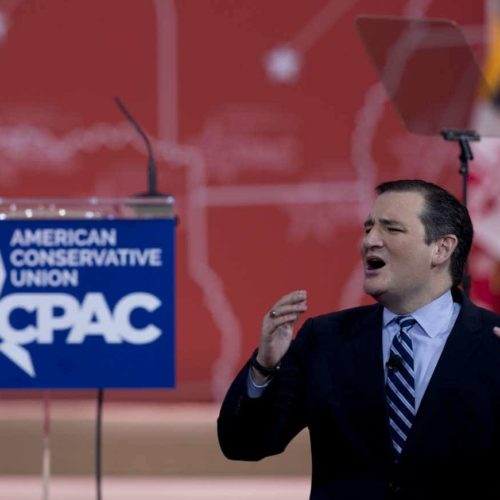Introduction
“Obamacare is a train wreck, and that’s actually not fair to train wrecks.”
So said Sen. Ted Cruz (R-Texas) at last week’s Conservative Political Action Conference in Maryland. It was a line that drew both applause and laughs, as you would expect from a gathering of folks who view the Affordable Care Act as an abomination.
Chances are that Cruz and his CPAC fans are hoping the Supreme Court will do what Congress has so far been unable to do, when the justices rule in a few months on King v. Burwell. That’s the lawsuit to be argued at the high court this week —the one arguing that the subsidies millions of people are getting in 34 states to help cover the cost of their health insurance are illegal. Cruz and others who despise Obamacare are hoping that if the Supreme Court rules in favor of the plaintiffs, what they consider a scourge on the nation will soon be eradicated.
But if there ever was a reason to cite the maxim, “be careful what you wish for,” it’s about this lawsuit. A Supreme Court decision that goes against Obamacare would lead to a train wreck with almost unimaginable consequences. And Republicans likely would get much of the blame.
Anyone who thinks such an outcome would usher in an era of a better functioning health insurance marketplace should read the amicus brief submitted by America’s Health Insurance Plans, the industry’s largest trade group.
AHIP’s brief supports the government, not the plaintiffs. It paints a picture not of a new heaven on earth if the Supreme Court decides against the government, but of a health insurance apocalypse. Not everywhere, though, ironically. The marketplace meltdown would occur only in those 34 states, led primarily by Republican governors, like in Texas, that defaulted to the federal government to operate their health insurance exchanges.
In King vs. Burwell, the plaintiffs argue that the way the Affordable Care Act is worded, the subsidies are lawful only in the states that decided to set up and operate their own exchanges. The sponsors of the legislation insist they never intended the law to be interpreted that way. Nevertheless, opponents insist that the courts should require the government to cut off the subsidies it has been paying to low- and moderate-income individuals and families since the beginning of 2014, in the states with exchanges operated by the feds.
Of course, AHIP is not above fear mongering to get what it wants. But in this case, the consequences undoubtedly would look a lot like what AHIP describes. The organization cites history to demonstrate what the future would look like if the plaintiffs prevail.
Most Americans, including many Republicans, agree that it was not a good idea for insurance companies to be able to deny coverage to anyone just because of a preexisting condition. Or to base policy premiums on an applicant’s gender, age and health. Yet that’s what insurers could do pre-Obamacare. And that’s largely why nearly 50 million Americans were uninsured before the law was passed.
The insurance industry was willing to go along with a requirement that they make their policies available to everyone and that they give up their ability to set prices based on criteria like gender and health status. In exchange, insurers insisted that there be a requirement in the law that everyone be required to buy coverage.
Without the mandate to buy insurance, young and healthy people would once again opt to go uninsured, leaving the marketplace to sicker and older consumers, AHIP wrote in its brief.
AHIP cited as evidence what had happened in years past when New York and a number of other states tried to force insurance companies to accept all applicants without a mandate to buy coverage. Premiums in every one of the states spiked dramatically, and many insurers left those states’ insurance markets because of the “death spiral” that was beginning to result.
A similar spiral would result if subsidies were taken away from the newly insured in those 34 states, AHIP warned. Because 87 percent of the newly insured have such low incomes they qualified for subsidies, most of them—especially the young and healthy ones—undoubtedly would drop coverage if they had to pay the full premium.
“A sicker pool of consumers results in higher premiums, which causes an additional relatively healthy subset of participants to drop out, which in turn results in a further increase in premiums.” That, in essence, is what the death spiral is all about.
In New York, the individual market shrank from 1.2 million to 31,000 between 1992 and 2010, AHIP noted. “At that point, the only people who participated in the market were those who were very sick and affluent,” AHIP wrote in its brief.
Eliminating the subsidies for the newly insured in 34 states would quickly lead to the collapse of the individual health insurance market place in those states just as it did in New York.
Talk about a train wreck. That is one that would be truly catastrophic and injure millions.
Wendell Potter is the author of Deadly Spin: An Insurance Company Insider Speaks Out on How Corporate PR is Killing Health Care and Deceiving Americans and Obamacare: What’s in It for Me? What Everyone Needs to Know About the Affordable Care Act.
Read more in Health
Wendell Potter commentary
If Obamacare critics win high court case, effects will be wildly disparate
Commentary: Kentucky residents would be unaffected, Tennesseans devastated
Health
Obamacare challenged in Supreme Court, but the states did it first
The Supreme Court takes on King v. Burwell today, but Obamacare faces challenges by state lawmakers in at least 16 states


Join the conversation
Show Comments